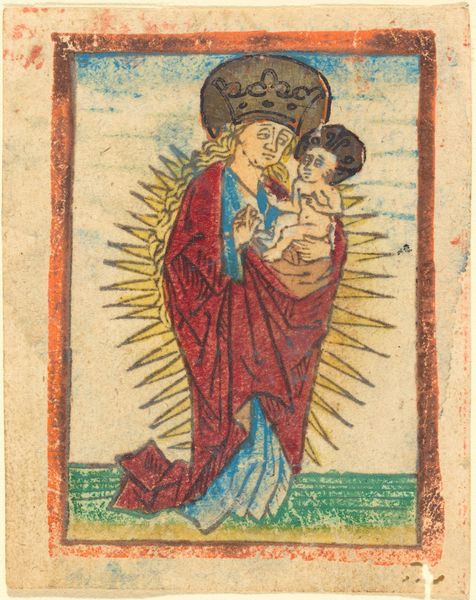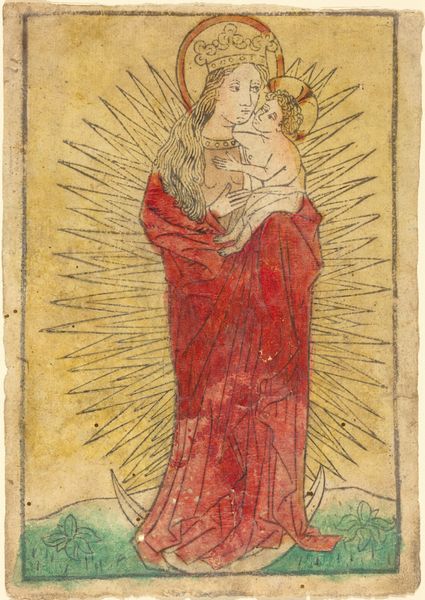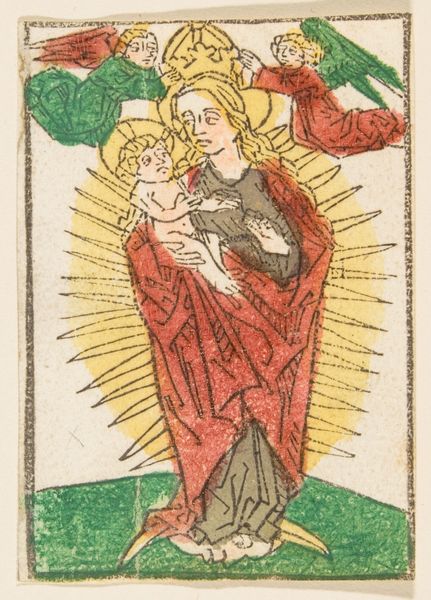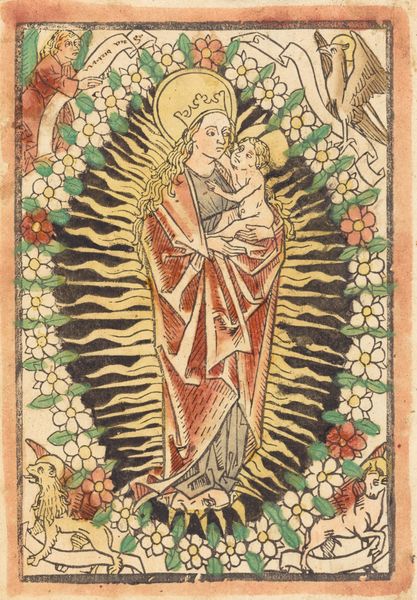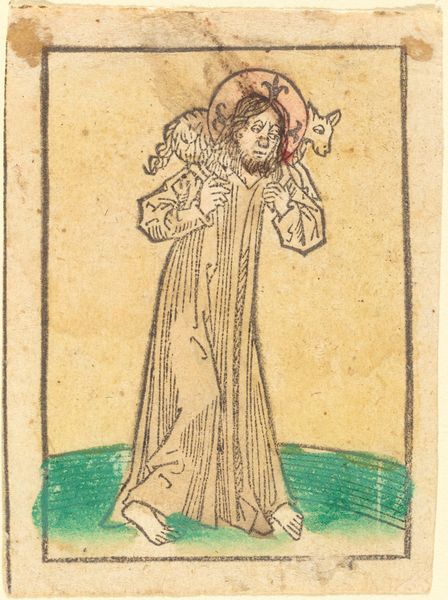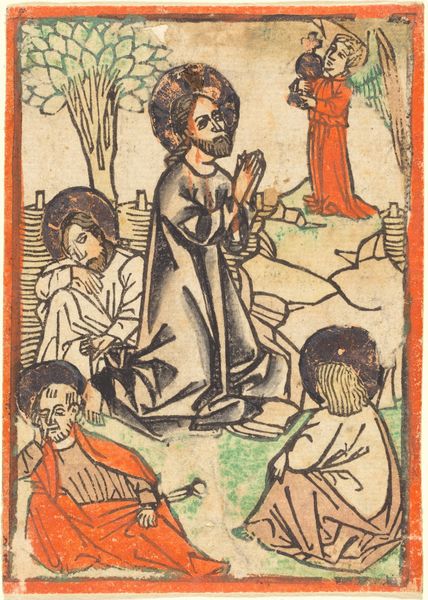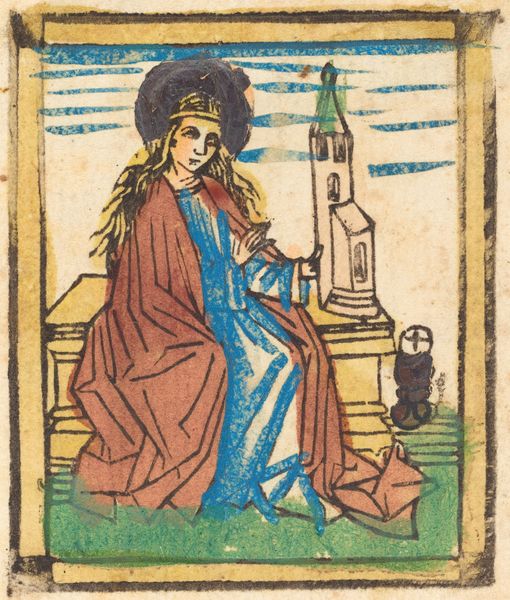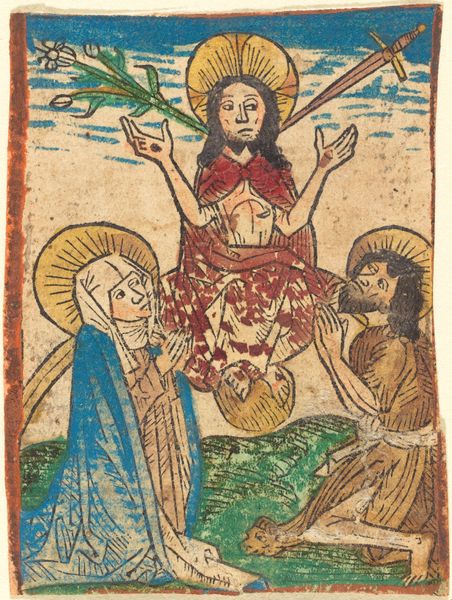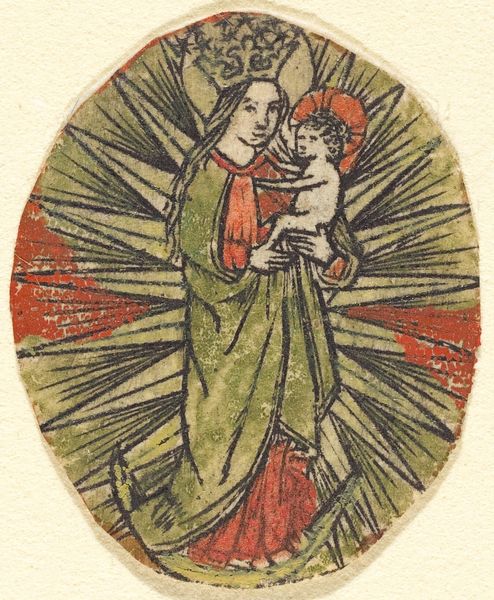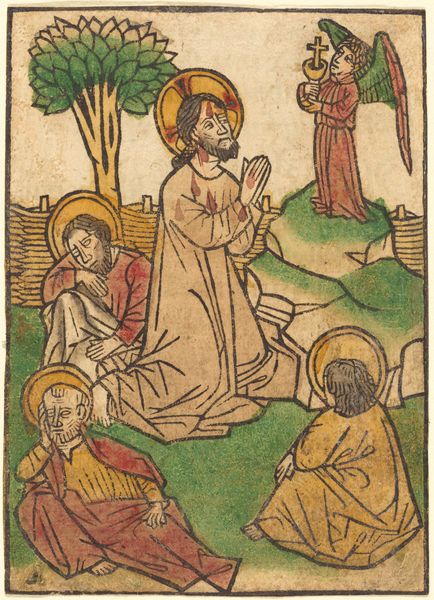
tempera, painting, print
#
portrait
#
medieval
#
tempera
#
painting
# print
#
figuration
#
coloured pencil
#
italian-renaissance
#
miniature
Copyright: National Gallery of Art: CC0 1.0
Curator: Here we have an intriguing piece from around 1470, attributed to an anonymous artist. It's titled "Madonna and Child in a Glory Standing on a Crescent Moon," and appears to be executed in tempera. What’s your initial reaction? Editor: Honestly, it's giving me a sweet, slightly melancholic vibe. There's a tenderness in the way Mary holds the child, but her face also suggests a touch of sorrow. The colors are muted, earthy almost. It feels small and intimate like a little devotional object you’d keep tucked away. Curator: Right. And when we look at its construction, we can really see the deliberate hand of the artist. Tempera, being an egg-based medium, lends itself to this jewel-like quality, where thin layers build up texture. Also, the miniature size makes it possible to keep and transport to many places and different functions. This likely wasn’t some grand commission for public display, but a privately owned devotional piece. Editor: Absolutely. Imagine the artist carefully mixing pigments, applying them meticulously. It’s hard to get the level of detail with egg tempera since it dries fast and its adherence on wood needs continuous process. There's a craft aspect that transcends mere artistry. Speaking of transportable art, it reminds me of when my grandmother traveled to India and brought an enitre set of dolls. Curator: Indeed. These details all hint at the specific networks of production and consumption in the 15th century. Consider, too, that the subject matter—Mary standing on the crescent moon—references both the Virgin’s purity and connects her to the powerful symbolism of the moon, and that connects her to ancient goddesses. So, in these ways, it could point out several political ideologies that converge into one visual, from the point of view of society. Editor: Which is wild, right? That so much thought, skill, and even cultural undercurrents are concentrated into such a petite thing. The crescent moon also creates this powerful juxtaposition of celestial divinity and the earthly presence of motherhood, somehow balancing them. Curator: Precisely. This tiny painting offers up ways of connecting us to its culture, as the materials of creation. Even how small is speaks to consumption on an individual level, a unique intersection in this late medieval object. Editor: Makes you wonder about the hands that held it, the prayers whispered before it, the light by which it was painted and appreciated, connecting a little thing with big cultural implications.
Comments
No comments
Be the first to comment and join the conversation on the ultimate creative platform.
